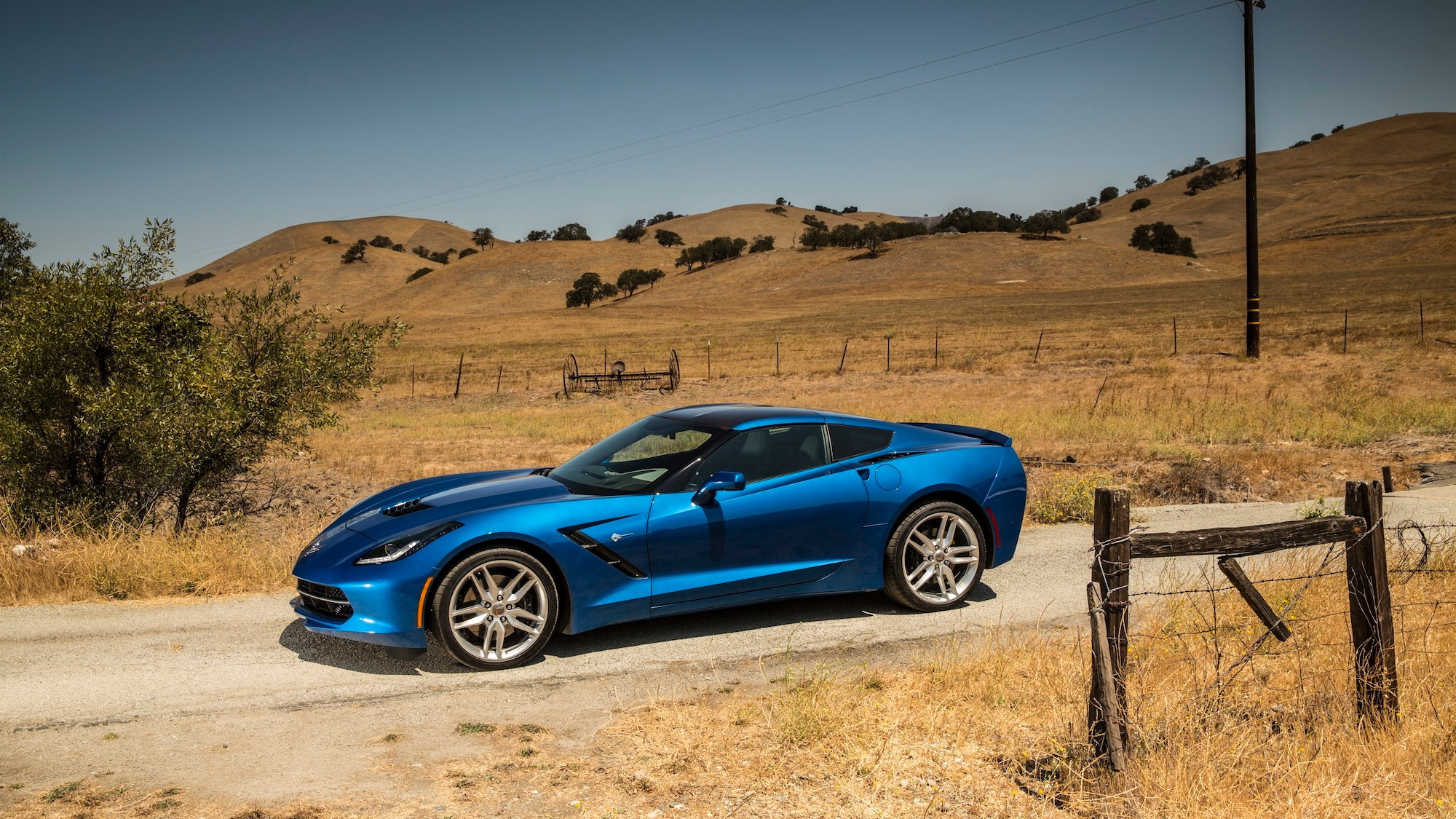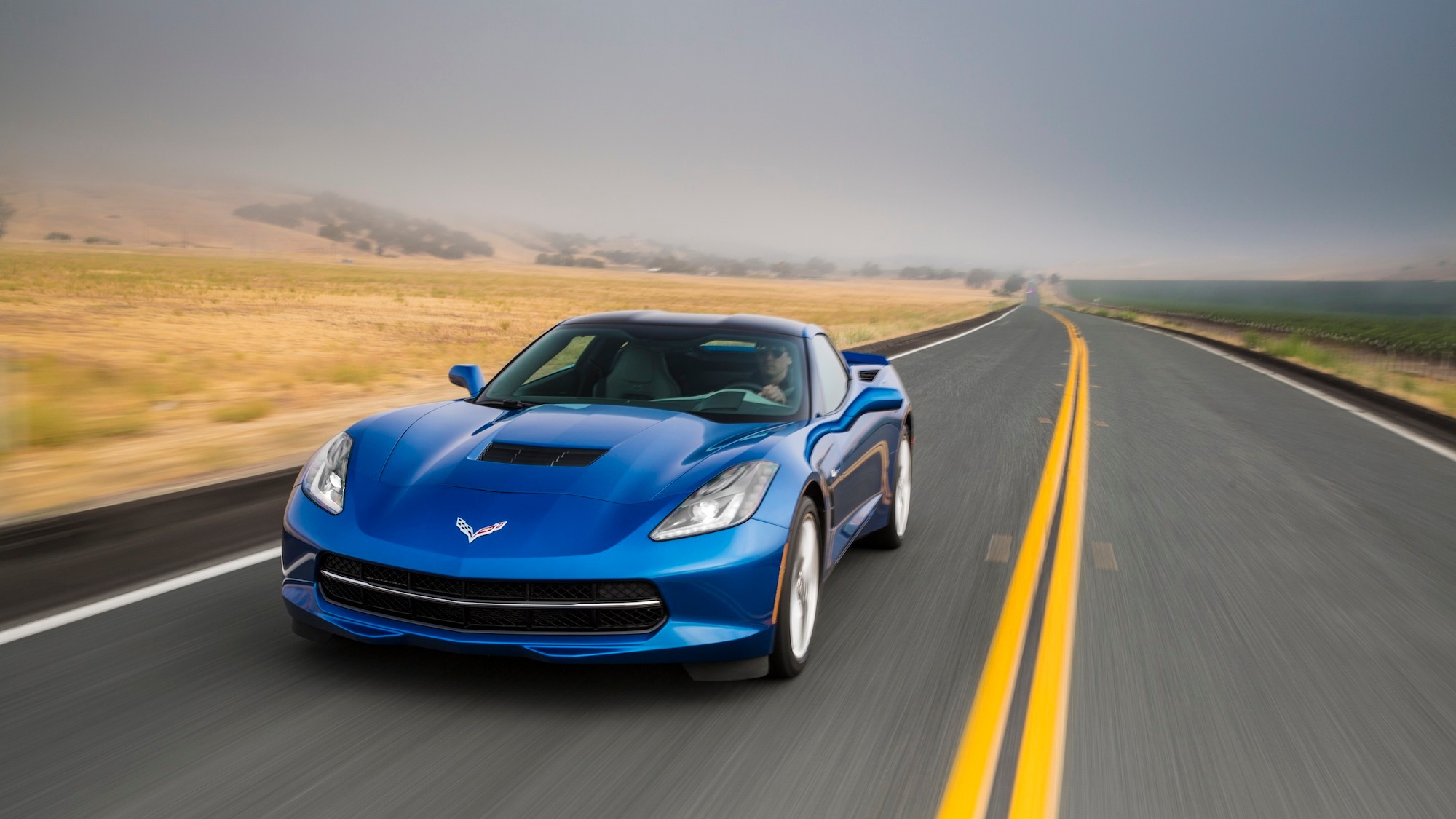If you've been saving your pennies hoping the new seventh-generation Corvette would deliver the performance goods, get your hammer. It's time to break open the piggy bank.
Why? Because the Z51 package makes it almost--almost--as good as a C6 Z06, but it's just $51,995 in base form. The last Z06 started at $75,600.
In other words, this base Corvette is worlds better than the last one, and the last one was pretty great.
The power
Fire it up, twist the little drive mode knob until you're in "Race" mode, snick the shifter into first, push in the clutch, and mat the throttle. You're in launch mode, and about to rip off toward 60 mph or however fast your nerve will take you. That 60-mph mark will arrive in just 3.8 seconds (according to Chevy), but it feels like it might even be quicker on a grippy surface. The new LT1 V-8? Sounds every bit as good as the previous LS3 and feels noticeably more potent.
Seven speeds might seem like one (or two) too many in a manual transmission, and in truth, it is, but that's not a problem. Just as with the Porsche 911, the seventh speed is essentially a commuter gear--drop it in 7th on the freeway and you'll get a couple more mpg. Otherwise, it's a surprisingly slick, though by no means stand-out, six-speed close-ratio gearbox. Thanks to those close ratios, however, all six are very usable, and offer good power from moderate speeds, making the car very tractable on the road.

2014 Chevrolet Corvette Stingray first drive
Take the car to a closed course, like the autocross Chevy set up for the event, and you'll find that power even more readily accessible--and surprisingly controllable, even with all of the (very well-executed) electronic aids turned off.
Sure, it's still a 455 hp (or 460 hp with the performance exhaust) car, and it still has street tires, so it can be a handful if you're not careful (and skilful) but the magic the Corvette works is behind the scenes. An electronically actuated limited slip differential can read and respond to the driver's input, the grip of each tire, and many other factors more than 83 times per second.
Even Vettel and Raikkonen don't react that quickly.
The handling
Whip the Z51-package 2014 Stingray into a tight, cambered, slightly dusty central California mountain road and you'll notice two things straight off: the car is incredibly stiff, and the steering actually does what you want it to.
The latter is surprising if only because the steering is electronically assisted. EPS systems have become more common in the past year or two, and will become the norm in the near future, but so far, very few carmakers have gotten the mix right. Chevy now joins the club of those that have.

2014 Chevrolet Corvette Stingray first drive
No, it's not magical, road-palming, life-changing steering feel, but it's at least as good as the hydraulic setup on the C6 Corvette. More to the point, it's accurate, predictable, linear where it should be (and nicely variable in ratio elsewhere), and, most of all, intuitive. You can feel what the car is doing well enough to learn what kind of input you need to give it to achieve the desired result, and that's good enough for us.
It's certainly good enough for a high-grip concrete pad autocross, where the Z51 showed some serious chops for a showroom-stock car. Here, the e-diff played a strong role as well, particularly with the Performance Traction Management system in Race mode, where the whole of the car's traction, stability, and yaw systems effectively say, "Hey, it's your show buddy. We won't say anything until you screw up."
They keep their promise. If you cause the PTM to step on you, even while aggressively slinging the rear of the car into a tight trail-braking late apex or going firmly to the gas on exit, you did something wrong--and even when it does step in, it only does it as much as necessary, maintaining speed and smoothness. It's really a capable system, and one we've loved since we first tried it on the Camaro ZL1.
But what about that uber-stiff chassis? That's obvious on the street, where the car feels firm and planted, letting the suspension do the work of soaking up bumps, potholes, and undulations. That means, with the optional magneto-rheological (MR) dampers fitted (a $1,200 option), the Z51 Stingray is actually quite comfortable even over broken, rough roads. Take that stiffness to the autocross course, and the feel the car communicates as to what each corner's contact patch is doing is remarkable.
Understeer is easily preempted even without the aids turned on, with the steering and the seat both telling you what's coming. Oversteer is easy to prevent, though still quite difficult to acquire and maintain (if you're after some tail-out antics), though it is possible with enough seat time.
In short, the 2014 Corvette Stingray coupe is a monster on the road and the closed course, readily taking the driver's input and generating smiles, speed, and glorious V-8 sound as the output. It's genuinely fun, and seriously capable.
2014 Chevrolet Corvette Stingray first drive
The day-to-day
There's some tire noise, and the car is pretty low to the ground, but those are the only real grumbles most people should have with the car.
For a sports car, the Stingray is quite comfortable, thanks in large part to the completely redesigned seats. While the optional sport seats aren't yet available for testing, we'd be happy to have the base model's seats--they're eight-way power adjustable (including lumbar), well-bolstered, and comfortable even for extended stints behind the wheel. My only gripe about the seats: they place the driver's derriere a touch higher than this sports car nut would like. A power tilt-and-telescope wheel makes getting the perfect driving position easy, even if you're a long-legged, short-armed weirdo like me.
As with the previous generation, the new Stingray's hatch-accessible cargo area is quite spacious. I've easily fit a week's luggage for two and a pony keg in the C6, and the C7 should hold at least as much.
As for the interior: it's even better than it looks in the photos. The real winner in my book is the "brownstone" shown on the 2014 Stingray Convertible at the New York Auto Show earlier this year, but even with more ordinary leather, the look and feel is finally what the Corvette should have been all along: sporty with a definite dash of luxury. Upgrade to 3LT trim and the dash becomes a dollop. The carbon fiber instrument panel surround is a $995 add-on, but it's worth the spend, too. It raises the look and feel of the car to yet another level.
An eight-inch screen in the instrument panel enables a different display suiting each of the five drive modes (Weather, Eco, Touring, Sport, and Race), further increasing the high-tech, luxury feel, and actually providing some visual performance benefit, most notably in Race mode, where the tachometer and gauge layout is modeled after the in-dash display of the Corvette Racing ALMS cars. There's another screen just like it in the center stack for the various infotainment controls, too.
The decision
If you're in the market for a world-class sports car and you're not hung up on foreign-sounding points of origin or country club badge envy, buy this car. You won't regret it. It's fantastic fun, and it's an absolute bargain when paired against any of the competition.
The Stingray is the new benchmark.









